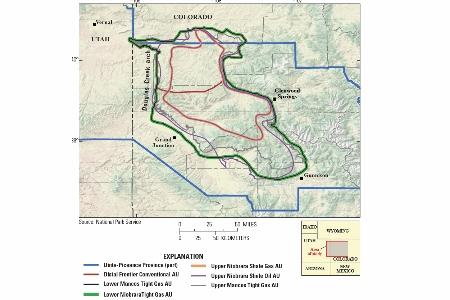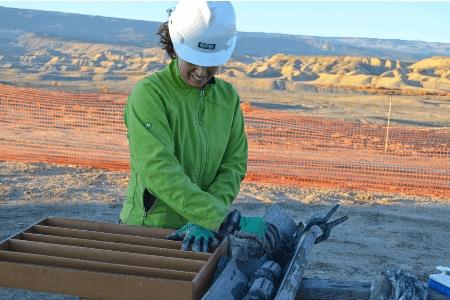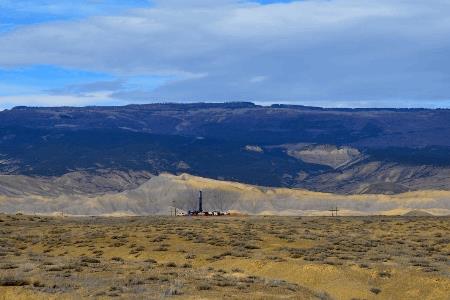USGS Estimates 66 Trillion Cubic Feet Of Natural Gas In Colorado's Mancos Shale Formation
This is the second-largest assessment of potential shale & tight gas resources that the USGS has ever conducted.

The Mancos Shale in the Piceance Basin of Colorado contains an estimated mean of 66 trillion cubic feet of shale natural gas, 74 million barrels of shale oil and 45 million barrels of natural gas liquids, according to an updated assessment by the U.S. Geological Survey. This estimate is for undiscovered, technically recoverable resources.
The previous USGS assessment of the Mancos Shale in the Piceance Basin was completed in 2003 as part of a comprehensive assessment of the greater Uinta-Piceance Province, and estimated 1.6 trillion cubic feet of shale natural gas.
“We reassessed the Mancos Shale in the Piceance Basin as part of a broader effort to reassess priority onshore U.S. continuous oil and gas accumulations,” said USGS scientist Sarah Hawkins, lead author of the assessment. “In the last decade, new drilling in the Mancos Shale provided additional geologic data and required a revision of our previous assessment of technically recoverable, undiscovered oil and gas.”

The Mancos Shale is a significant potential source of natural gas. For comparison, the assessed mean resources in the Mancos Shale of the Piceance Basin are the second-largest assessment of potential continuous gas resources that the USGS has ever conducted.
Since the last USGS assessment, more than 2,000 wells were drilled and completed in one or more intervals within the Mancos Shale of the Piceance Basin. In addition, the USGS Energy Resources Program drilled a research well in the southern Piceance Basin that provided significant new geologic and geochemical data that were used to refine the 2003 assessment.
The Mancos Shale is more than 4000 feet thick in the Piceance Basin, and contains intervals that act as the source rock for shale gas and oil, meaning that the petroleum was generated in the formation. Some of the oil and gas migrated out of the source rock and into tight (low permeability) reservoirs within the Mancos, as well as into conventional reservoirs both above and below the formation. Oil and gas also remained in continuous shale gas and shale oil reservoirs within the Mancos.

Tight gas in the younger, shallower parts of the Mancos Shale is produced primarily from vertical and directional wells in which the reservoirs have been hydraulically fractured. Shale oil and gas in the older and deeper intervals of the Mancos Shale are produced mostly from horizontal wells that have been hydraulically fractured.
The Mancos Shale is not the only formation that USGS has reassessed as technology and geologic understanding have advanced. In 2015, USGS released an updated Barnett Shale assessment for Texas; in 2013, USGS released an updated assessment of the Bakken Formation in North Dakota and, in 2011, USGS released an updated assessment of the Marcellus Shale.
USGS is the only provider of publicly available estimates of undiscovered technically recoverable oil and gas resources of onshore lands and offshore state waters. The USGS Mancos Shale assessment was undertaken as part of a nationwide project assessing domestic petroleum basins using standardized methodology and protocol.

The new assessment of the Mancos Shale may be found online. To find out more about USGS energy assessments and other energy research, please visit the USGS Energy Resources Program website(http://energy.usgs.gov/).
Source: U.S. Geological Survey
